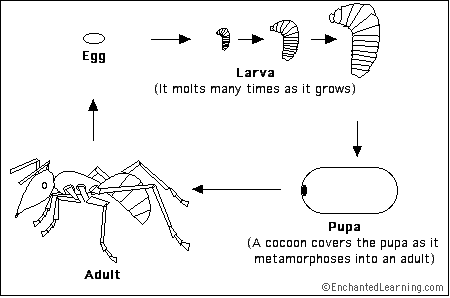The Electric Ant
Hey guys! Have you ever been bitten by red ants? You must be annoyed at those ants. I know how it feels though, I often got bitten by the ants. Anyway, now I'm gonna tell you facts about one of the species of those ants!
The electric ant, also known as the little fire ant, Wasmannia auropunctata, is a small (approx 1.5 mm long), light to golden brown (ginger) social ant native to Central and South America, now spread to parts of Africa (including Gabon and Cameroon), North America, Puerto Rico, Israel, Cuba, and six Pacific Island groups (including the Galapagos Island, Hawaii, New Caledonia and the Solomon Island) plus north-eastern Australia (Cairns).

The classification of the electric ant is:

Environmental
The electric ant, also known as the little fire ant, Wasmannia auropunctata, is a small (approx 1.5 mm long), light to golden brown (ginger) social ant native to Central and South America, now spread to parts of Africa (including Gabon and Cameroon), North America, Puerto Rico, Israel, Cuba, and six Pacific Island groups (including the Galapagos Island, Hawaii, New Caledonia and the Solomon Island) plus north-eastern Australia (Cairns).

The classification of the electric ant is:
- Kingdom: Animalia
- Phylum: Arthropoda
- Class: Insecta
- Order: Hymenoptera
- Family: Formicidae
- Subfamily: Myrmicinae
- Genus: Wasmannia
- Species: W. auropunctata
The life cycle of the ant consists of four stages: egg, larva, pupa, and adult. Fertilized eggs produce female ants (queens, workers, or soldiers); unfertilized eggs produce male ants.
Egg: Ant eggs are oval shaped and tiny (they are on the order of 1 mm long, but the queen's egg is many times larger).
Larva: The worm-like larvae have no eyes and no legs; they eat food regurgitated by adult ants. The larvae molt (shed their skin) many times as they increase in size.
Pupa: After reaching a certain size, the larva spins a silk-like cocoon around itself (against a solid object, like the wall of the chamber) and pupates. During this time the body metamorphoses (changes) into its adult form.
Adult: The pupa emerges as an adult. The entire life cycle usually lasts from 6 to 10 weeks. Some queens can live over 15 years, and some workers can live for up to 7 years.
More information:
- Queens lay up to 70 eggs a day.
- Eggs are incubated for 8-10 days.
- Larvae develop for 14-16 days.
- Nymphal stage lasts 13-14 days.
- Adult workers live for more than 40 days.
- Males live for several weeks.
You can find the uniqueness of this animal in the impact if you got bitten by it. The impacts are:
Environmental
- Can out-compete other ant species and cause declines in numbers of invertebrates and small vertebrates.
- Thought to have reduced reptile populations in New Caledonia and tortoise populations in Galapagos Archipelago, where ants eat hatchlings and attack eyes and cloacae of adult tortoises.
- Farm scale insects for honeydew, creating agricultural nuisance.
- Repeatedly sting farm workers, reducing worker output and leading to loss of workers.
- Inflict painful stings on humans that cause painful, itchy, persistent pimples and, occasionally, severe allergic reactions.
- May sting, and possibly blind, domestic pets.
- Dense infestations may leave backyards or pools unusable.
- May invade insides of houses.
References:
- https://en.wikipedia.org/wiki/Electric_ant
- https://www.business.qld.gov.au/industries/farms-fishing-forestry/agriculture/land-management/health-pests-weeds-diseases/pests/invasive-animals/restricted/electric-ant
- http://www.enchantedlearning.com/subjects/insects/ant/Antlifecycle.shtml
Images:
- https://myrmecos.wordpress.com/2010/04/07/little-fire-ants/
- http://www.enchantedlearning.com/subjects/insects/ant/Antlifecycle.shtml

Komentar
Posting Komentar